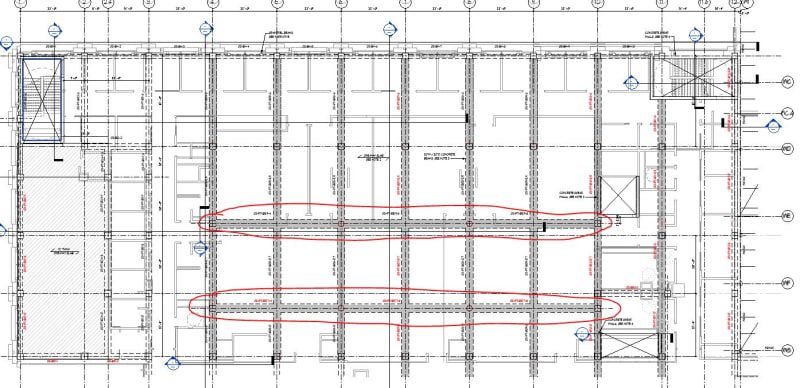TomB_SCPA
Structural
- Oct 13, 2022
- 1
We are designing a concrete framed building with unbonded PT beams in one direction that run end to end and conventionally reinforced one-way slabs spanning to the PT beams. This has been a successful strategy for us on many projects. In previous projects, we have been able to keep the PT in one direction only and any required beams in the perpendicular direction would be conventionally reinforced.
In this current project, I have a few conditions where the architect has eliminated columns for various reasons creating long spans in the direction perpendicular to our typical PT direction. This requires PT girders that do not need to run to the end of the slab in either direction. Therefore, I end up with portions of the floor in one direction that are stressed and portions that are not, as opposed to a more typical, uniform condition.
Obviously, there would need to be blockouts to stress the tendons. My larger concern is if the fact that I am stressing the middle of the slab only will result in excessive cracking where the PT ends and the conventional slab begins, or if conventional reinforcing will be enough to keep the cracks to a minimum. Since this is a conventionally reinforced one-way slab, it is relatively heavily reinforced (compared with a PT slab). We have never had to do this before, so there are various thoughts within the office as to the ultimate effect.

Any thoughts would be helpful.
In this current project, I have a few conditions where the architect has eliminated columns for various reasons creating long spans in the direction perpendicular to our typical PT direction. This requires PT girders that do not need to run to the end of the slab in either direction. Therefore, I end up with portions of the floor in one direction that are stressed and portions that are not, as opposed to a more typical, uniform condition.
Obviously, there would need to be blockouts to stress the tendons. My larger concern is if the fact that I am stressing the middle of the slab only will result in excessive cracking where the PT ends and the conventional slab begins, or if conventional reinforcing will be enough to keep the cracks to a minimum. Since this is a conventionally reinforced one-way slab, it is relatively heavily reinforced (compared with a PT slab). We have never had to do this before, so there are various thoughts within the office as to the ultimate effect.

Any thoughts would be helpful.
